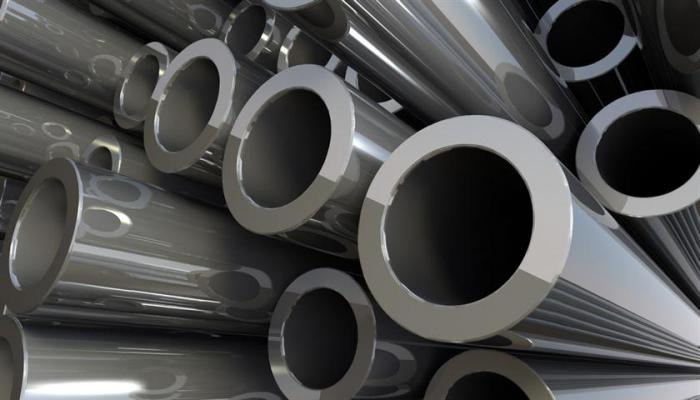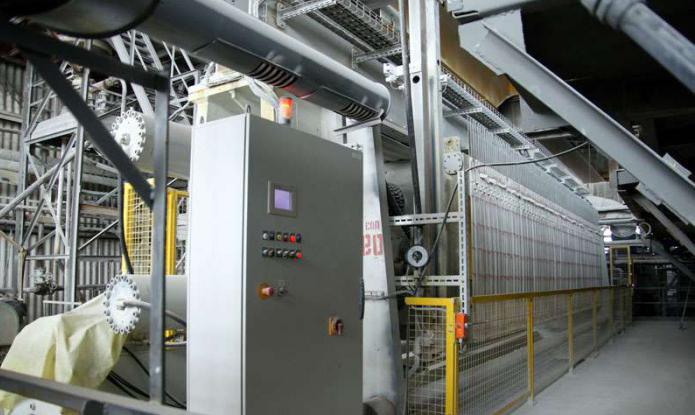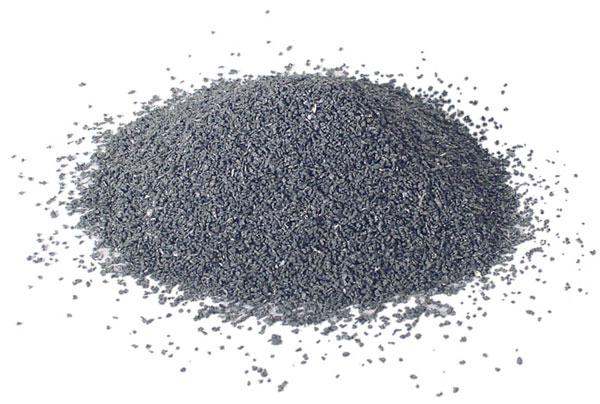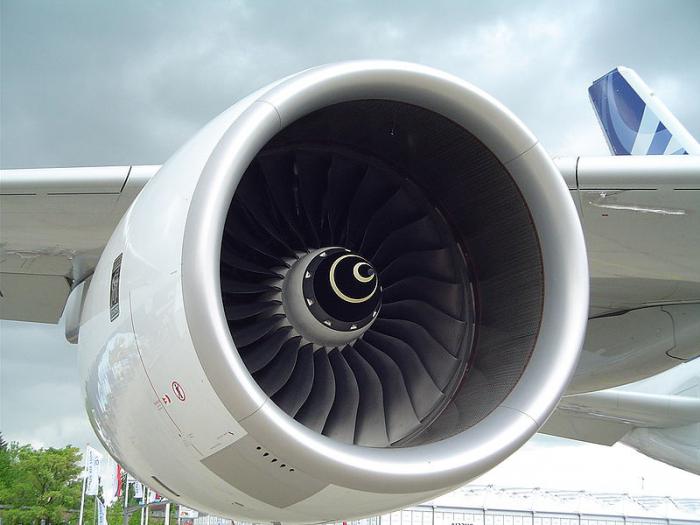The eternal, mysterious, cosmic, material of the future - all these and many other epithets are assigned in various sources to titanium. The history of the discovery of this metal was not trivial: at the same time, several scientists worked on the isolation of the element in its pure form. The process of studying physical, chemical properties and determining the areas of its application has not been completed to date. Titanium is the metal of the future, its place in human life has not yet been finally determined, which gives modern researchers a huge scope for creativity and scientific research.
Characteristic
The chemical element titanium (Titanium) is indicated in the periodic table of D. I. Mendeleev by the symbol Ti. It is located in a side subgroup of group IV of the fourth period and has a serial number 22. The simple substance is titanium - a white-silver metal, light and durable. The electronic configuration of the atom has the following structure: +22) 2) 8) 10) 2, 1S 2 2S 2 2P 6 3S 2 3P 6 3d 2 4S 2 . Accordingly, titanium has several possible oxidation states: 2, 3, 4, in the most stable compounds it is tetravalent.
Is titanium an alloy or a metal?
This question interests many. In 1910, the American chemist Hunter first received pure titanium. The metal contained only 1% of impurities, but at the same time its amount was negligible and did not make it possible to further study its properties. The plasticity of the obtained substance was achieved only under the influence of high temperatures; under normal conditions (room temperature), the sample was too fragile. In fact, this element did not interest scientists, since the prospects for its use seemed too vague. The complexity of obtaining and research has further reduced the potential for its application. Only in 1925, chemical scientists from the Netherlands I. de Boer and A. Van Arkel received titanium metal, whose properties attracted the attention of engineers and designers around the world. The history of the study of this element begins in 1790, it was at this time in parallel, independently from each other, two scientists discover titanium as a chemical element. Each of them receives a compound (oxide) of the substance, failing to isolate the metal in its pure form. The discoverer of titanium is considered the English mineralologist monk William Gregor. In the territory of his parish, located in the southwestern part of England, a young scientist began studying the black sand of the Menaken Valley. The result of experiments with the magnet was the release of shiny grains, which were a compound of titanium. At the same time in Germany, chemist Martin Heinrich Klaproth isolated a new substance from the rutile mineral. In 1797, he proved that elements opened in parallel are similar. For more than a century, titanium dioxide has been a mystery to many chemists; even Berzelius was unable to obtain pure metal. The latest technologies of the XX century significantly accelerated the process of studying the mentioned element and determined the initial directions of its use. At the same time, the scope is constantly expanding. Only the complexity of the process of obtaining such a substance as pure titanium can limit its scope. The price of alloys and metal is quite high, so today it can not displace traditional iron and aluminum.

origin of name
Menakin is the first name for titanium, which was used until 1795. That is, according to territorial affiliation, called a new element W. Gregor. Martin Klaprot assigns the element in 1797 the name "titanium". At this time, his French colleagues, led by a fairly reputable chemist A. L. Lavoisier, proposed naming newly discovered substances in accordance with their basic properties. The German scientist did not agree with this approach, he reasonably believed that at the discovery stage it was rather difficult to determine all the characteristics inherent in a substance and to reflect them in the name. However, it should be recognized that the term intuitively chosen by Klaprot is fully consistent with metal - this has been repeatedly emphasized by modern scientists. There are two main theories for the origin of the name titanium. The metal could be so named in honor of the elven queen Titania (a character in German mythology). This name symbolizes both the lightness and strength of the substance. Most scholars are inclined to the version of the use of ancient Greek mythology, in which the titans called the mighty sons of the goddess of the land of Gaia. The name of the previously discovered element, uranium, also speaks in favor of this version.

Being in nature
Of the metals that are technically valuable to humans, titanium is the fourth most abundant in the earth's crust. Only iron, magnesium and aluminum are characterized by a high percentage in nature. The highest titanium content was noted in the basaltic shell, slightly less than it in the granite layer. In seawater, the content of this substance is low - approximately 0.001 mg / l. The chemical element titanium is quite active, so in its pure form it is impossible to meet. Most often, it is present in compounds with oxygen, while it has a valency equal to four. The amount of titanium-containing minerals varies from 63 to 75 (in various sources), while at the present stage of research, scientists continue to discover new forms of its compounds. The following minerals are most important for practical use:
- Ilmenite (FeTiO 3 ).
- Rutile (TiO 2 ).
- Titanite (CaTiSiO 5 ).
- Perovskite (CaTiO 3 ).
- Titanomagnetite (FeTiO 3 + Fe 3 O 4 ), etc.
All existing titanium-containing ores are divided into placer and basic. This element is a weak migrant; it can only travel in the form of broken rocks or the movement of silty bottom rocks. In the biosphere, the largest amount of titanium is found in algae. In representatives of terrestrial fauna, an element accumulates in horny tissues and hair. The human body is characterized by the presence of titanium in the spleen, adrenal glands, placenta, thyroid gland.
Physical properties
Titanium is a non-ferrous metal that has a silver-white color, looks like steel. At a temperature of 0 0 C, its density is 4.517 g / cm 3 . The substance has a low specific gravity, which is typical for alkali metals (cadmium, sodium, lithium, cesium). In terms of density, titanium occupies an intermediate position between iron and aluminum, while its operational characteristics are higher than that of both elements. The main properties of metals, which are taken into account when determining the scope of their application, are yield strength and hardness. Titanium is 12 times stronger than aluminum, iron and copper 4 times stronger, while it is much lighter. The ductility of a pure substance and its yield strength allow processing at low and high temperature values, as in the case of other metals, i.e., methods of riveting, forging, welding, and rolling. A distinctive characteristic of titanium is its low thermal and electrical conductivity, while these properties are preserved at elevated temperatures, up to 500 0 C. In a magnetic field, titanium is a paramagnetic element, it is not attracted like iron and is not pushed out like copper. Very high anti-corrosion performance in aggressive environments and during mechanical stress is unique. More than 10 years in sea water have not changed the appearance and composition of the titanium plate. Iron in this case would be completely destroyed by corrosion.
Thermodynamic properties of titanium
- The density (under normal conditions) is 4.54 g / cm 3 .
- The atomic number is 22.
- Group of metals - refractory, light.
- The atomic mass of titanium is 47.0.
- Boiling point ( 0 ) - 3260.
- The molar volume of cm 3 / mol is 10.6.
- The melting point of titanium ( 0 C) is 1668.
- The specific heat of evaporation (kJ / mol) is 422.6.
- Electrical resistance (at 20 0 ) Ohm * cm * 10 -6 - 45.
Chemical properties
The increased corrosion resistance of the element is explained by the formation of a small oxide film on the surface. It prevents (under normal conditions) chemical reactions with gases (oxygen, hydrogen) in the surrounding atmosphere of an element such as titanium metal. Its properties change under the influence of temperature. When it is increased to 600 0 C, a reaction of interaction with oxygen takes place, as a result, titanium oxide (TiO 2 ) is formed. In the case of absorption of atmospheric gases, brittle compounds are formed that do not have any practical application, which is why titanium is welded and melted in a vacuum. A reversible reaction is the process of dissolution of hydrogen in a metal; it occurs more actively with increasing temperature (from 400 0 and higher). Titanium, especially its small particles (thin plate or wire), burns up in a nitrogen atmosphere. A chemical reaction is possible only at a temperature of 700 0 C, as a result, TiN nitride is formed. With many metals it forms highly hard alloys, it is often an alloying element. It reacts with halogens (chromium, bromine, iodine) only in the presence of a catalyst (high temperature) and under the condition of interaction with a dry substance. In this case, very hard refractory alloys are formed. With solutions of most alkalis and acids, titanium is not chemically active, with the exception of concentrated sulfuric (with prolonged boiling), hydrofluoric, and hot organic (formic, oxalic).

Place of Birth
The most common in nature are ilmenite ores - their reserves are estimated at 800 million tons. Deposits of rutile deposits are much more modest, but the total volume - while maintaining production growth - should provide humanity for the next 120 years with a metal such as titanium. The price of the finished product will depend on demand and increasing the level of manufacturability, but on average it varies in the range from 1200 to 1800 rubles / kg. In conditions of continuous technical improvement, the cost of all production processes is significantly reduced with their timely modernization. The largest reserves of titanium ores are possessed by China and Russia; Japan, South Africa, Australia, Kazakhstan, India, South Korea, Ukraine, and Ceylon also have a mineral resource base. Deposits are distinguished by volumes of production and the percentage of titanium in the ore, geological surveys continue constantly, which makes it possible to assume a decrease in the market value of the metal and its wider use. Russia is by far the largest titanium producer.
Getting
For the production of titanium, its dioxide containing the minimum amount of impurities is most often used. It is obtained by enrichment of ilmenite concentrates or rutile ores. In an electric arc furnace, the ore is heat treated, which is accompanied by the separation of iron and the formation of slag containing titanium oxide. The sulfate or chloride method is used to process the iron-free fraction. Titanium oxide is a gray powder (see photo). Titanium metal is obtained by its phased processing.

The first phase is the process of sintering slag with coke and exposure to vapor of chlorine. The resulting TiCl 4 is reduced with magnesium or sodium when exposed to a temperature of 850 ° C. A titanium sponge (porous fused mass) obtained as a result of a chemical reaction is refined or smelted into ingots. Depending on the further direction of use, an alloy or metal is formed in its pure form (impurities are removed by heating to 1000 0 C). For the production of substances with a share of impurities of 0.01%, the iodide method is used. It is based on the process of vaporization from a titanium sponge pre-treated with halogen.
Fields of application

The melting point of titanium is high enough, which, with the lightness of the metal, is an invaluable advantage of using it as a structural material. Therefore, it finds the greatest application in shipbuilding, the aviation industry, the manufacture of rockets, and chemical industries. Titanium is often used as an alloying additive in various alloys, which have high characteristics of hardness and heat resistance. High anti-corrosion properties and the ability to withstand most aggressive environments make this metal indispensable for the chemical industry. Pipelines, containers, valves, filters used in the distillation and transportation of acids and other chemically active substances are made from titanium (its alloys). It is in demand in the creation of devices operating in conditions of high temperature indicators. Titanium compounds are used for the manufacture of durable cutting tools, paints, plastic and paper, surgical instruments, implants, jewelry, decoration materials, and are used in the food industry. All directions are difficult to describe. Due to their complete biological safety, modern medicine often uses titanium metal. Price is the only factor that so far affects the breadth of application of this element. It is true that titanium is the material of the future, by studying which, mankind will move to a new stage of development.